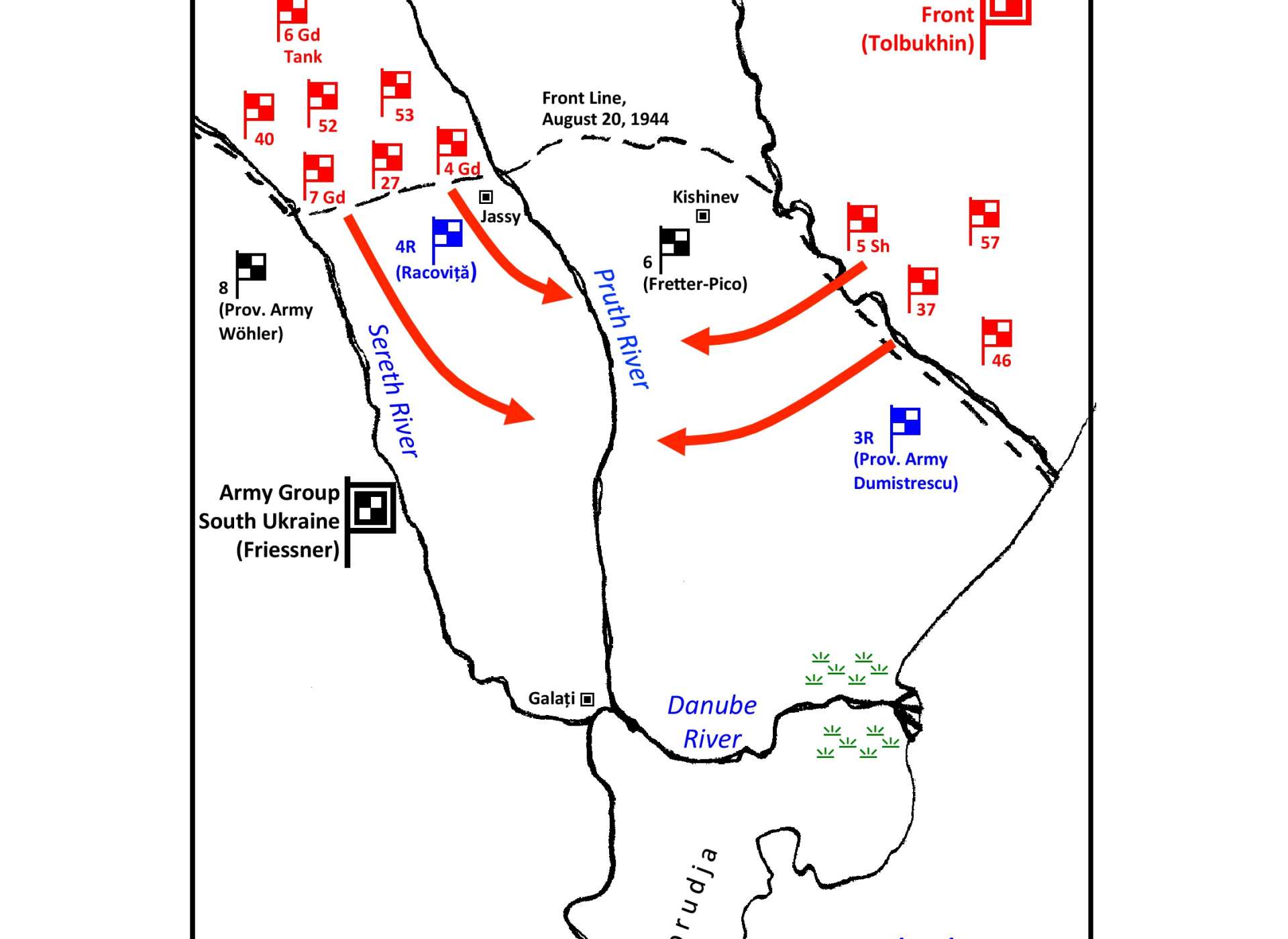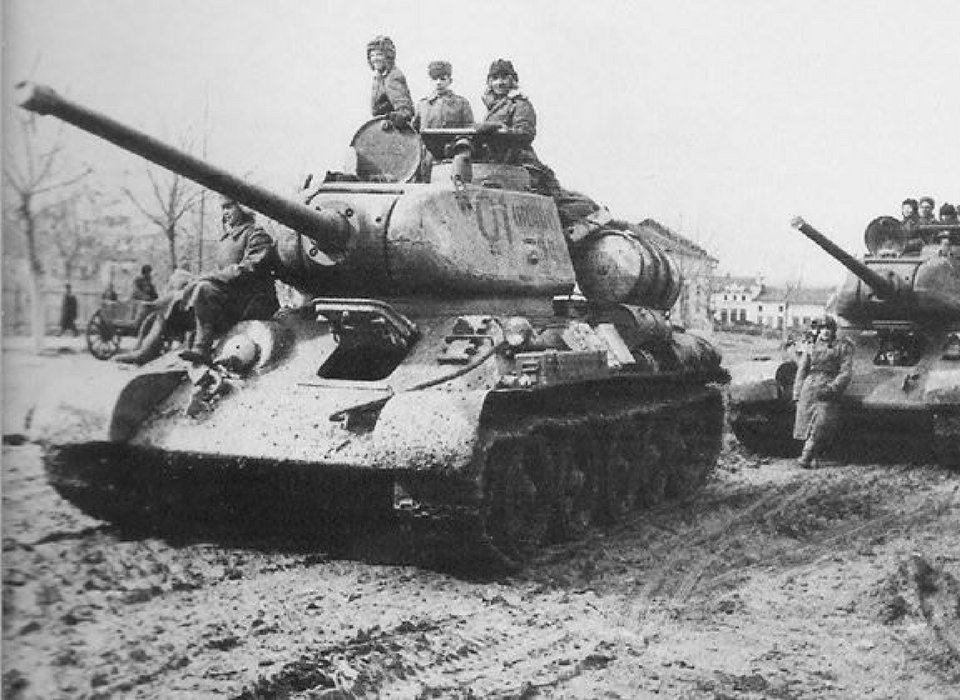Top image: A column of Soviet tanks T34/85 (winter 1943-44).
Sometimes World War II is so big it’s tough to wrap your head around it. Battles that in another conflict would form the martial centerpiece often find little place in modern memory, and sometimes we forget them altogether. World War II claims more memorable great battles than any war in history, but just as many of its fights are forgotten.
Nowhere is this more true than on the Eastern Front, that massive confrontation between Germany and the Soviet Union. Even considered on its own, it was one of history’s greatest conflicts. The size of the opposing forces, the ferocity, the physical sprawl of the battlefield, the death toll, you name it: the Eastern Front was the Big One.
How big? Consider the following scene: the German Sixth Army is in deep trouble. Months of constant, grinding combat have sapped this force of men and materiel, dulling its fighting edge and bringing its frontline soldiers to the brink of exhaustion. As the curtain rises, the Red Army has launched a massive counteroffensive. Not only have heavy Soviet attacks have pinned Sixth Army in front, but the Soviets are also working around the Germans’ left and right flanks, protected by elements of the 3rd and 4th Romanian Armies.
The Romanians, staunch allies of the Reich and pillars of the invasion known as Operation Barbarossa, are brave soldiers, to be sure, but they have nowhere near the equipment, supply, or training that the Wehrmacht boasts. By day’s end, Soviet forward detachments—combinations of fast-moving tanks, infantry, and motorized artillery—have ripped great gashes in both Romanian armies’ defensive sectors.
As always, a Red Army “second echelon” stands ready to exploit the breakthrough. By the second day, Soviet T-34 and JS-1 (“JS” for Joseph Stalin) tanks are speeding forward, lapping at Sixth Army’s flanks and heading for a link-up far to the German rear. That connection happens on the third day of the offensive. Sixth Army is encircled—trapped in what the Germans call a Kessel, or “cauldron.” The Soviets have cut Sixth Army off from home, from any line of retreat, and from the roads and railroads on which its supplies travel. A mechanized army deprived of its daily allotment of replacements, ammunition, fuel, and food begins almost immediately to die. Fighting strength plummets, and so does morale.

Already, Sixth Army’s brain trust—the army commander and his staff officers, along with his corps commanders and theirs—are evaluating: how many days, how many men, how much fuel and supplies. The math stinks, and so does the list of operational alternatives. The Germans can stay put and hope for a relief offensive from outside the pocket. Unfortunately, no German army is nearby, or even in the same time zone; the rest of the German front is in headlong retreat. The Soviet offensive has shattered the Romanians, who can be of no help.
Vague promises of supply by air are floating from the Führer’s headquarters, but sup-plying so large an army—hundreds of thousands of men—is a pipe dream. Sixth Army has one option: strap on helmets, form up, and try to fight its way out of the cauldron. It will not be easy, counter-attacking to the west while holding off Soviet lunges from all the other compass points, but at least Sixth Army would be doing something—and in such an awful situation it’s crucial to maintain morale.
Wait a minute, you cry! All this sounds so familiar. Any World War II aficionado instantly recognizes the scenario. How can we say this is a “forgotten battle”? Stalingrad? You can’t be serious. It’s one of the best-known episodes in the entire war!
But that’s just the point. This is not Stalingrad, and the above scene is not from Operation Uranus, the great Soviet counteroffensive of 1942. Rather, the time is August 1944, and the Red Army has just launched the “Jassy-Kishinev operation,” hardly a household phrase in the West today. The German Sixth Army, rebuilt in 1943 after the Red Army encircled and destroyed it at Stalingrad, is standing not on the Volga River, but between the Dniester and the Pruth. The Sixth is fighting not in the Soviet Union but in Romania. The army’s commander is not the ill-fated General Friedrich Paulus, but the equally doomed, if far less well-known, General Maximilian Fretter-Pico. Sixth Army is again encircled, dying for a second time in 18 months. And by and large, historians have yawned.
How big was this war? So big that the Soviets killed the same German army twice—surely some sort of milestone—and we don’t even notice.
Robert Citino, PhD
Robert Citino, PhD, is the former Samuel Zemurray Stone Senior Historian in the Jenny Craig Institute for the Study of War and Democracy.
Cite this article:
MLA Citation:
APA Citation:
Chicago Style Citation:





![Max Fuchs, New York City cantor, sings as Rabbi Sydney [sic] Lefkowitz, Richmond, VA, conducts the first Jewish services from Germany.](/sites/default/files/styles/max_650x650/public/2025-10/image1.jpg)



